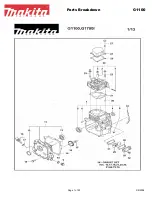
GUIDE TO INSTALLATION AND OPERATION
XVP-3901 |
53
Auto Align button to automatically adjust the audio timing delay to ensure a perfect alignment with the video.
This is equivalent to changing manually the audio delay in the audio processor. If you change the output
timing of the card or the video output format, you may have to re-align the Dolby-E.
•
The offset is not available for any type of audio other than Dolby-E.
The measured Dolby-E offset can be a positive OR a negative value. A negative value indicates the Dolby-E is in
advance compared to the video and additional delay should be added to the audio channel pair.
A positive value indicates the Dolby-E is late compared to the video and the audio delay must be reduced for this
channel pair. Sometimes, the audio delay cannot be compensated because it would mean to have an audio delay
lower than the processing delay of the card. In this case, you have to add an extra frame delay to the video to provide
more range to the audio delay.
5.7 Dynamic Proc. panel
This panel provides controls for dynamic processing of the
audio passing through the XVP-3901. The audio processing
(XVP-3901-OPT-AUD) and the dynamics processing (XVP-
3901-OPT–DP) options must be activated to access this
functionality. Individual and independent controls are
provided for each of the 32 channels.
These parameters affect the output audio channels (HD/SD
embedded and AES), the audio channels assigned to the
Dolby-E/Digital encoder modules, as well as the audio
channels sent to the DAP or UAP
companion cards.
Note that unlike the audio processing configuration, only one
(1) dynamic processing configuration is saved by the card,
regardless of the input format (3G/HD or SD).
•
Access the individual channel controls through 4
master tabs and sub-tabs
The functionality of these controls is identical for each
channel, and is explained here.
The upper right-hand corner of each tab contains a graphic
depicting the transfer characteristic of the channel as
configured by the current dynamic processing settings.
Images will be shown below to illustrate the effect of the
various controls
Mode
Use the pulldown to select the operating mode for this channel, from among these options:
•
Mono:
applies the dynamics processing settings only to the selected channel
•
Stereo:
applies the dynamics processing settings to the channel pair (e.g. 1 & 2, 7 & 8, etc.)
•
Group 1: applies the dynamics processing settings only to the channel assigned to Group 1
•
Group 2. applies the dynamics processing settings only to the channel assigned to Group 2
Click the
Bypass Settings
checkbox to bypass all the dynamics processing settings set up in this panel for this
channel.
Figure 5.43
Dynamic Processing panel
















































